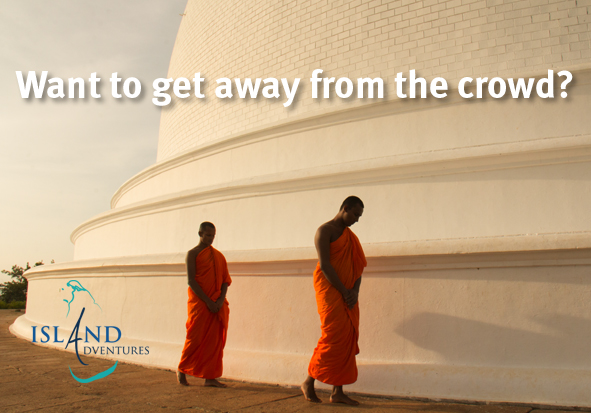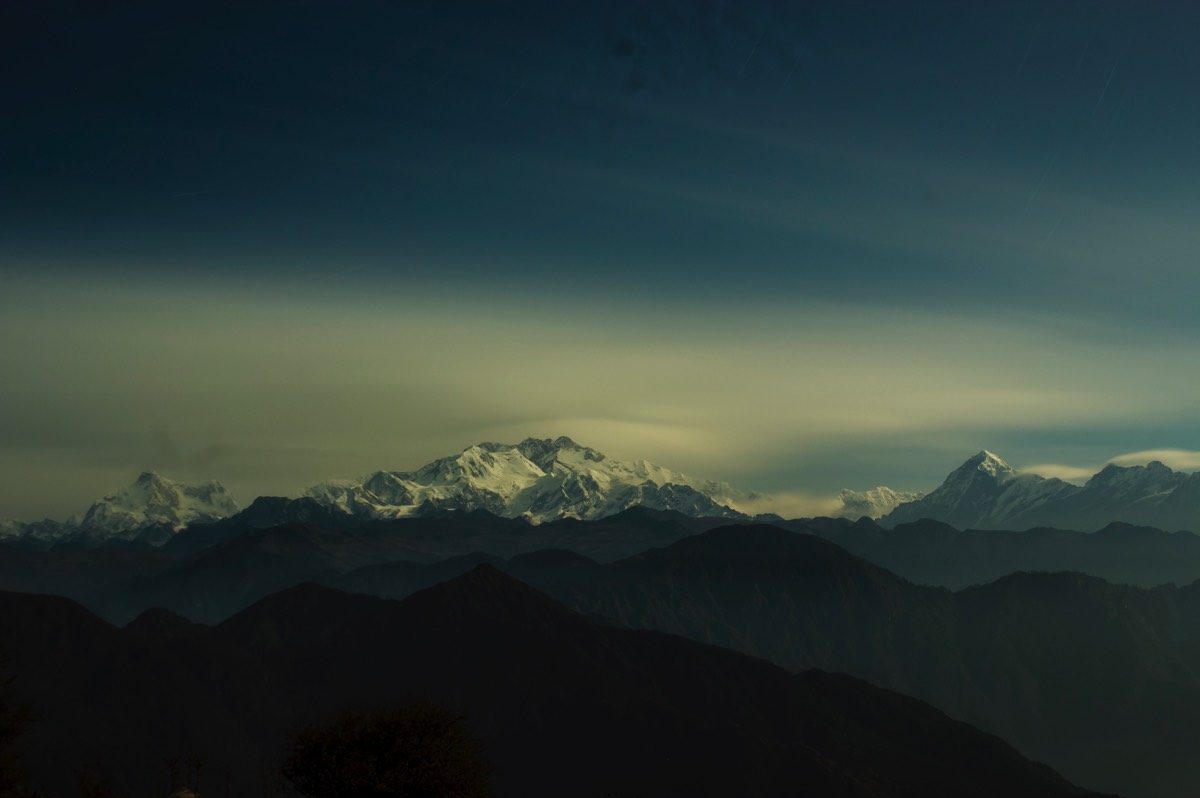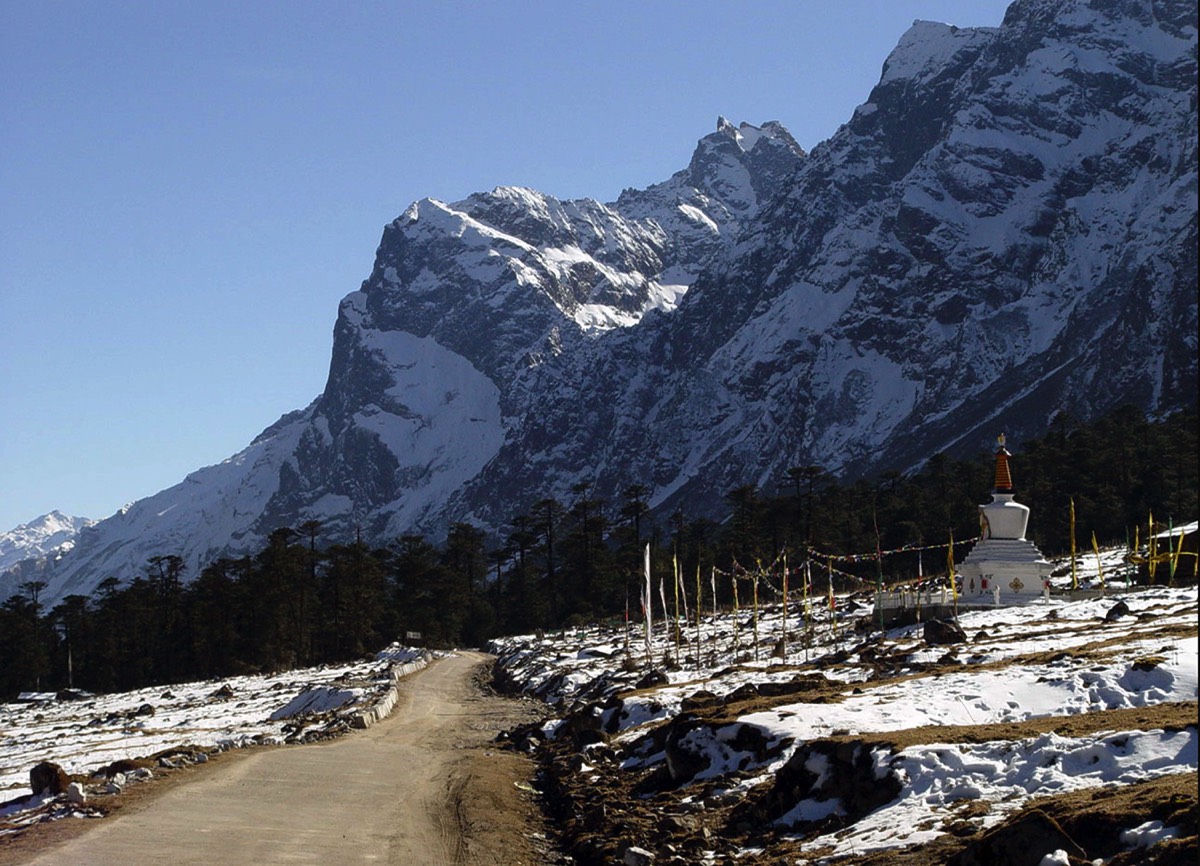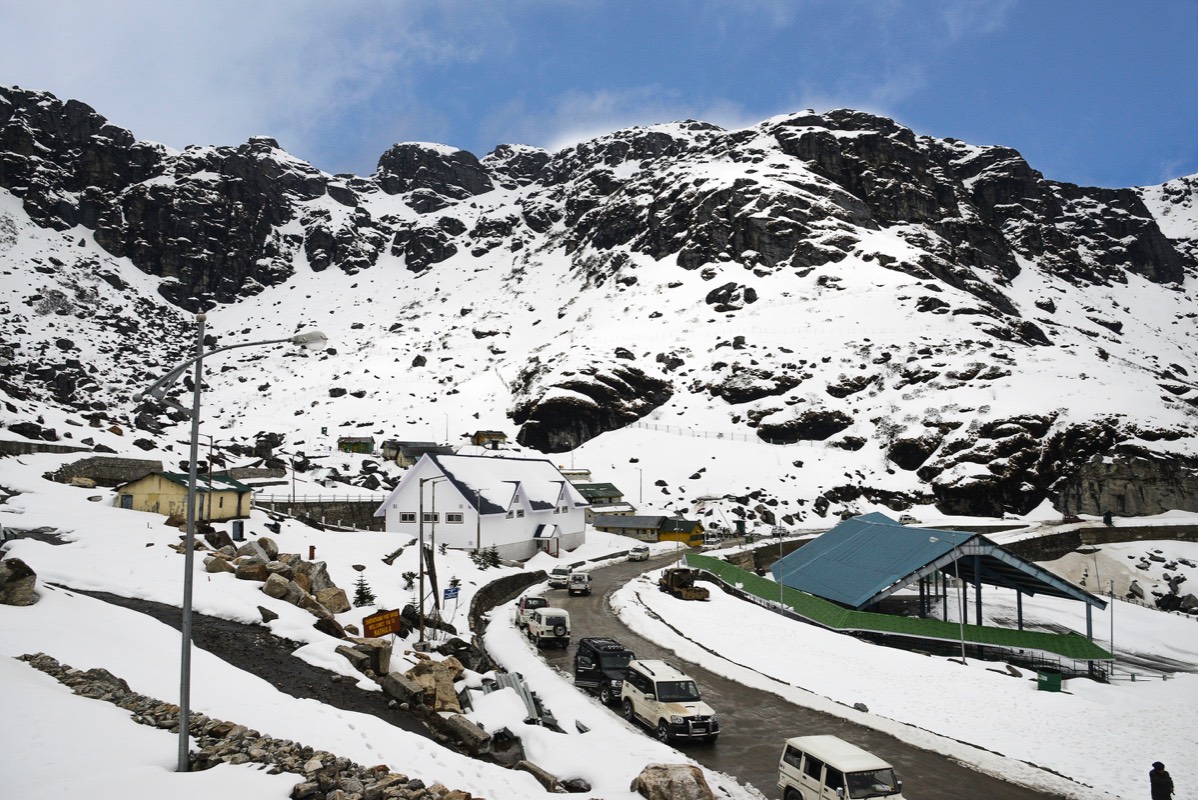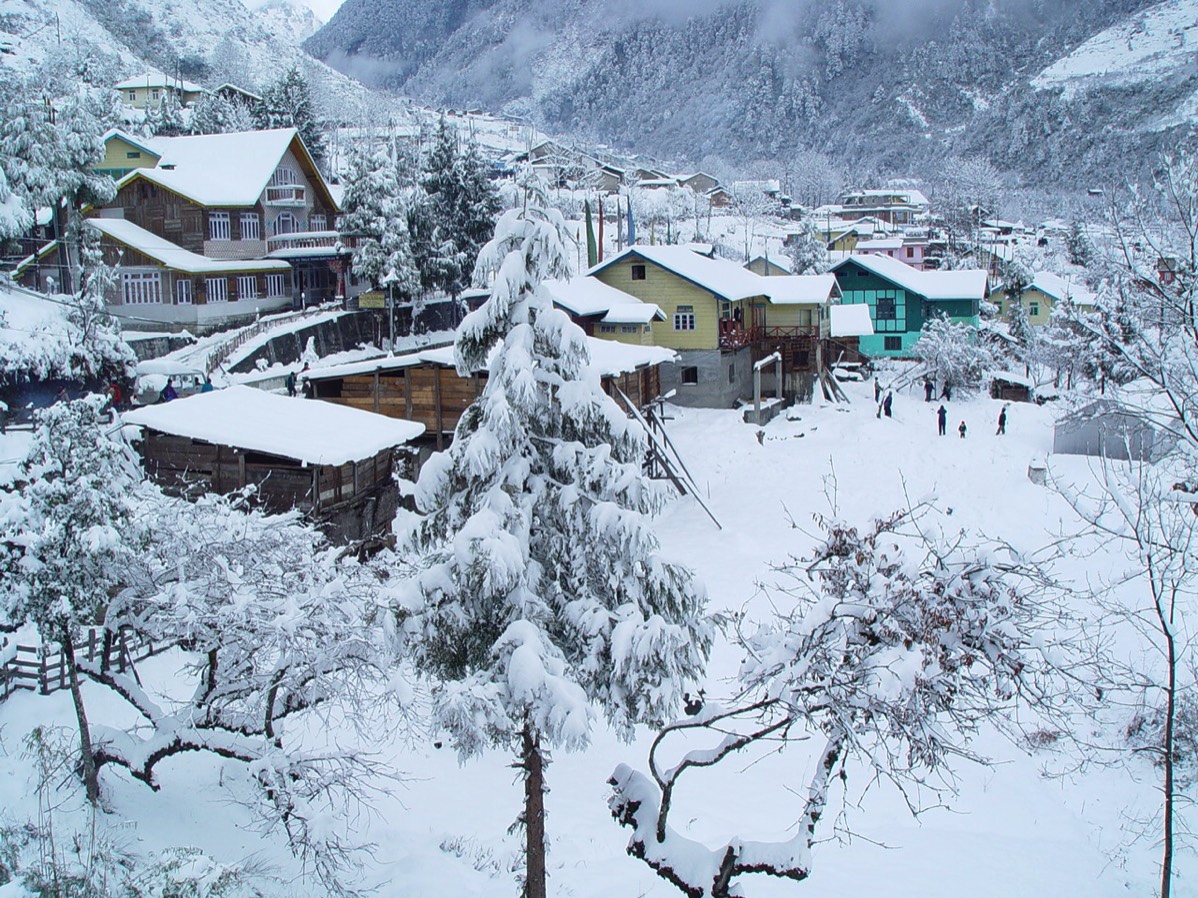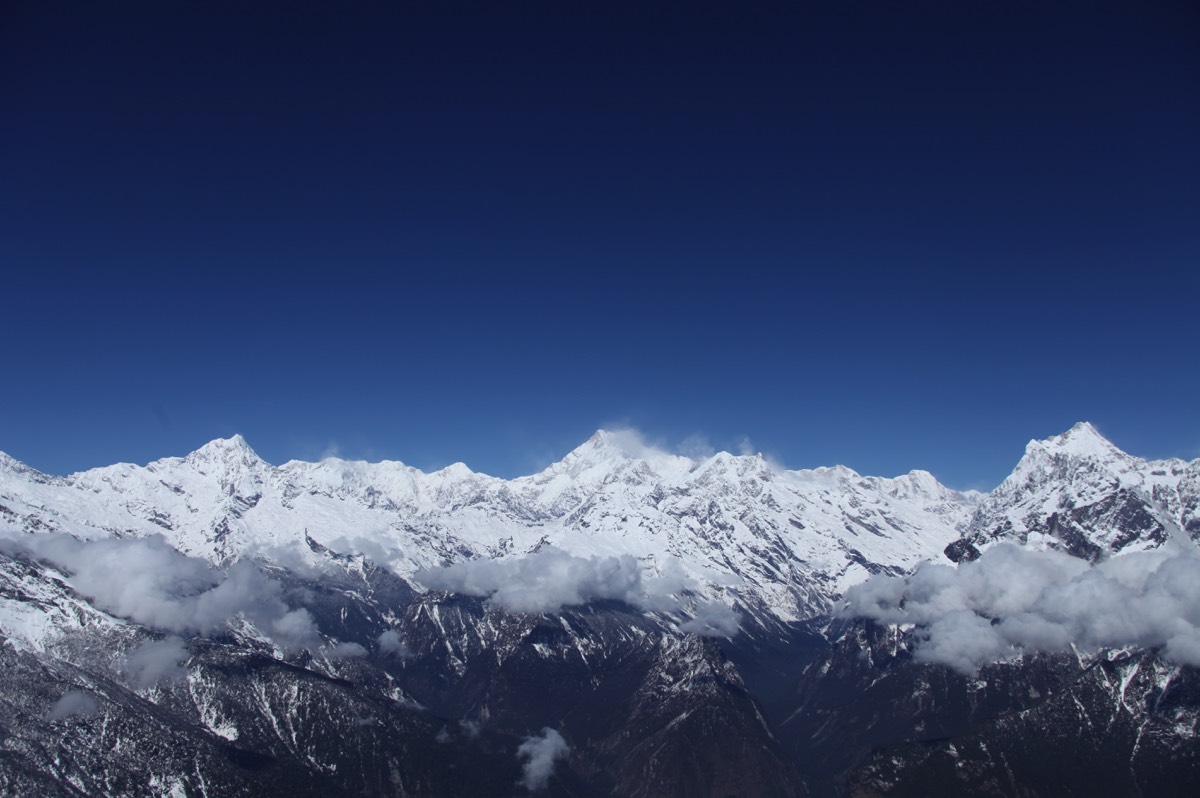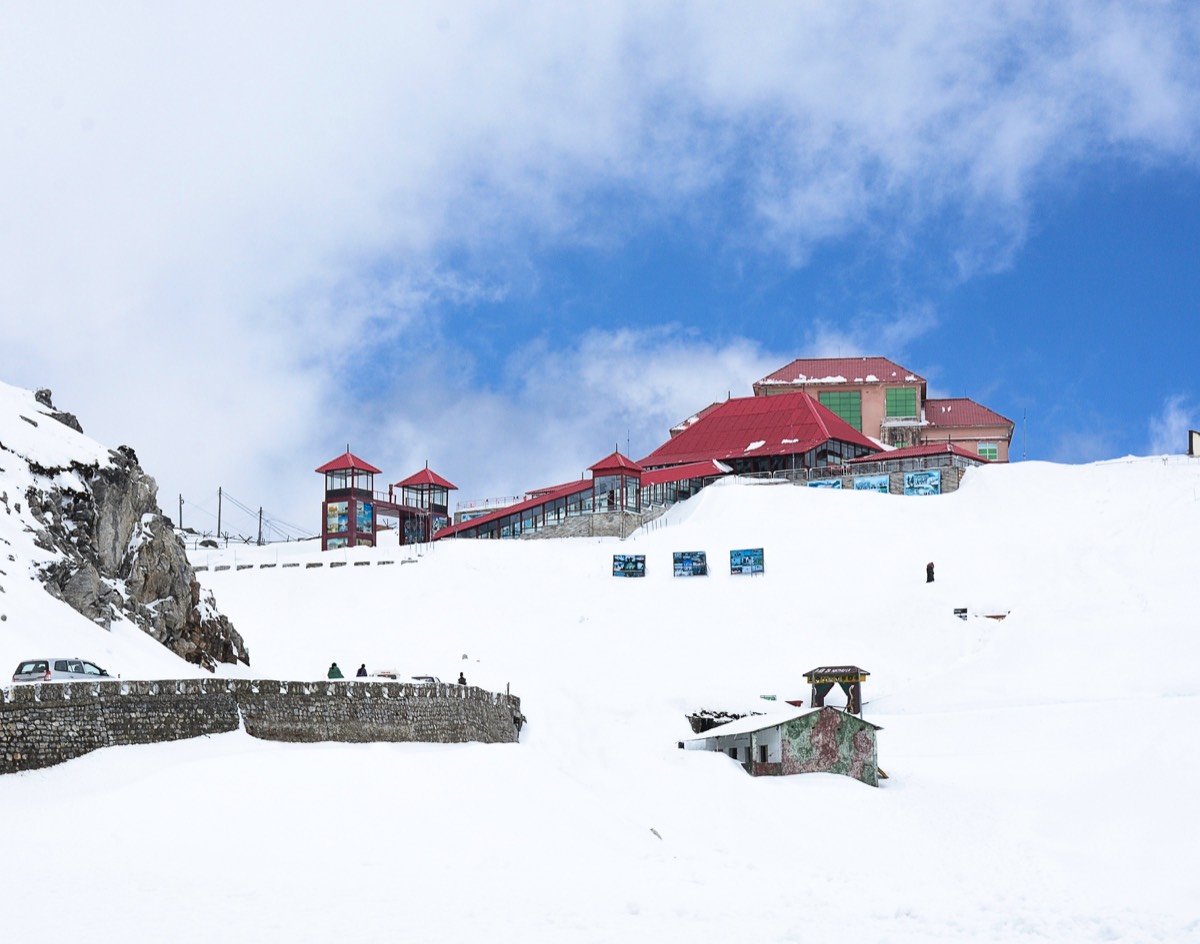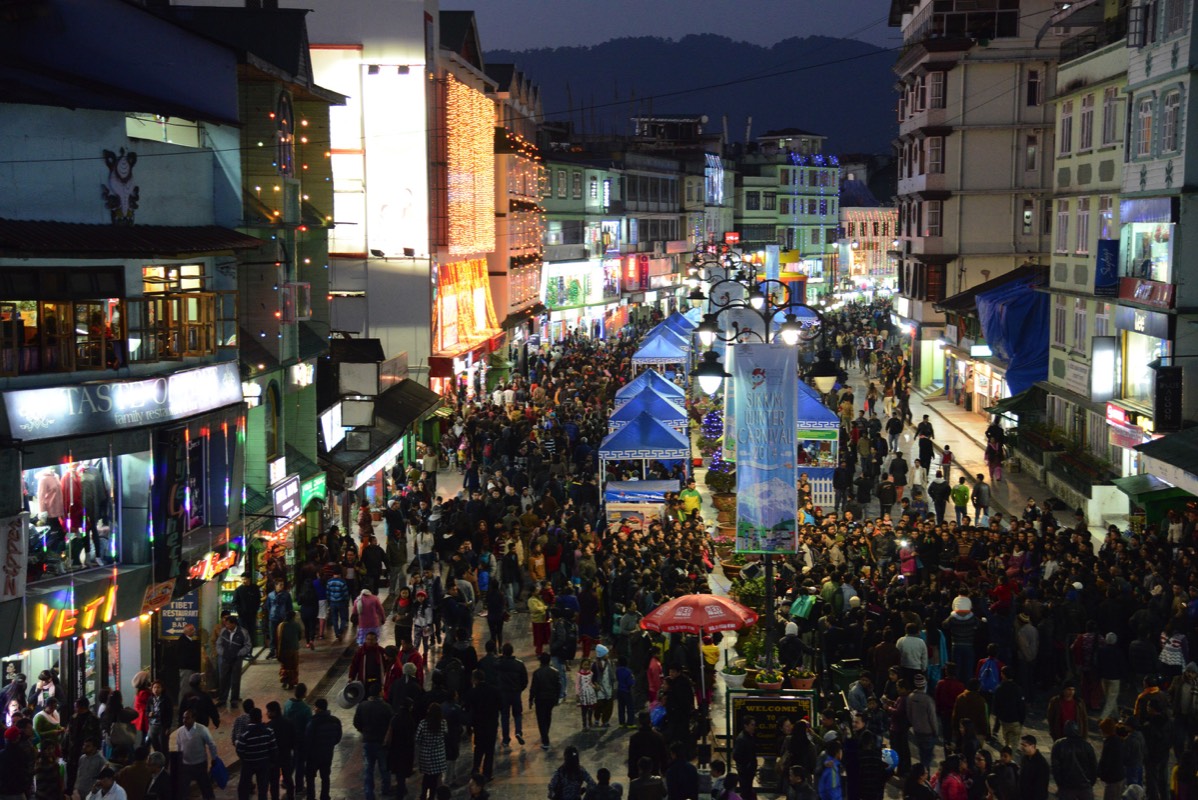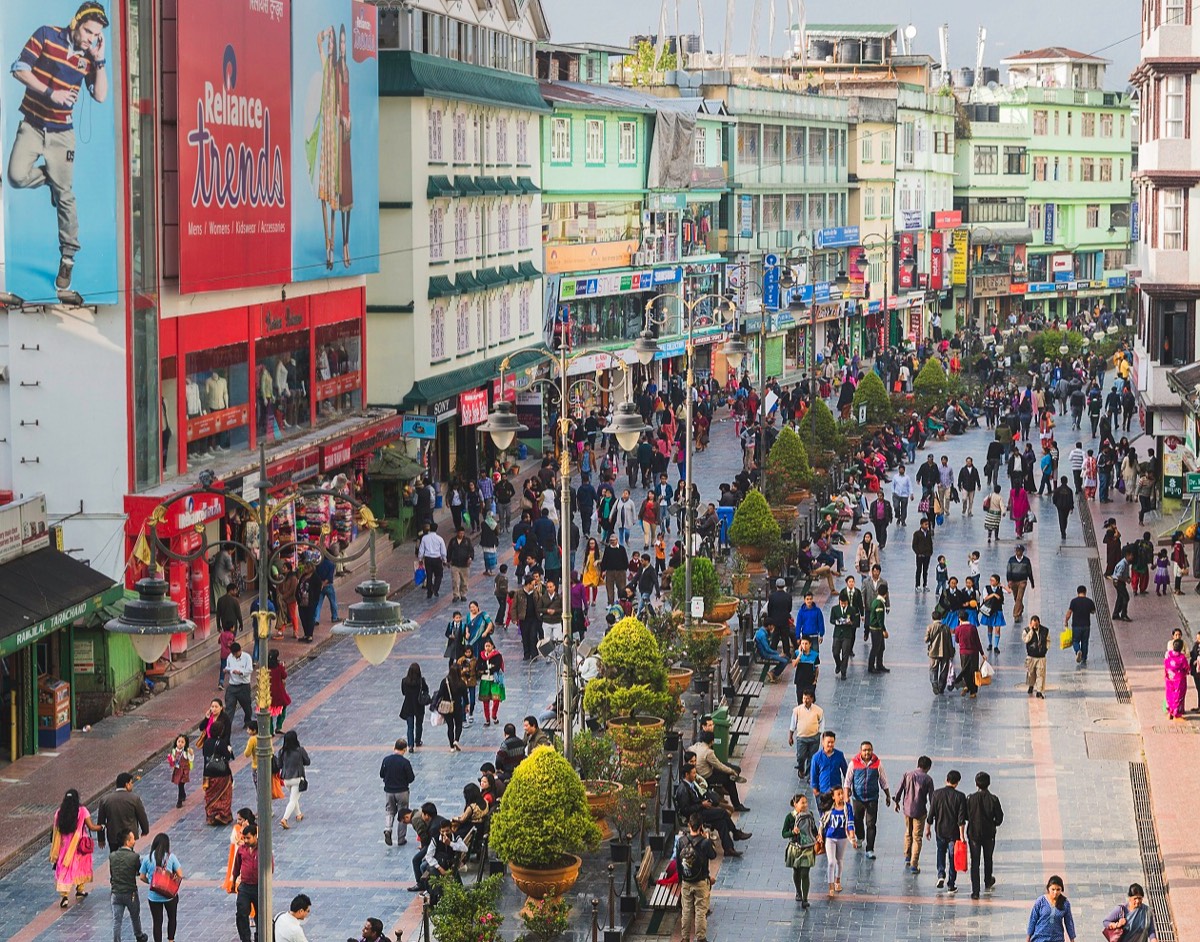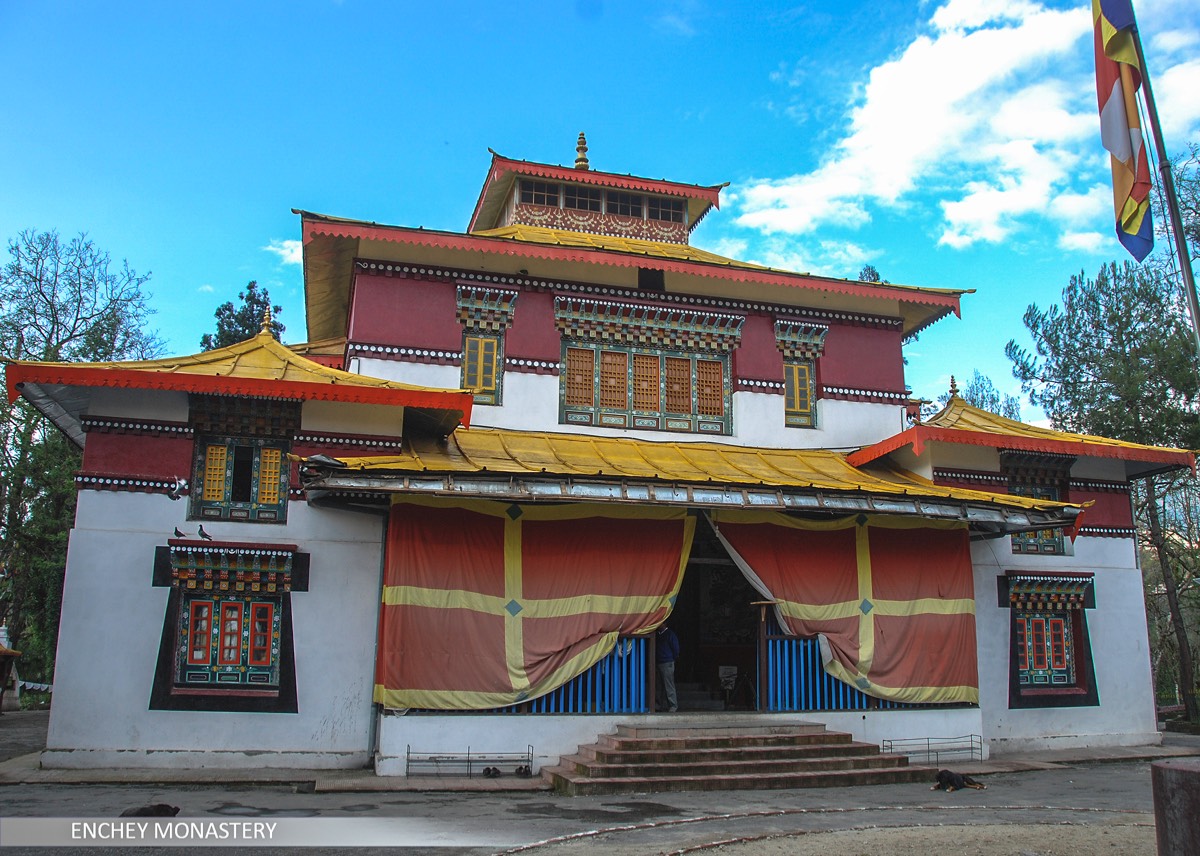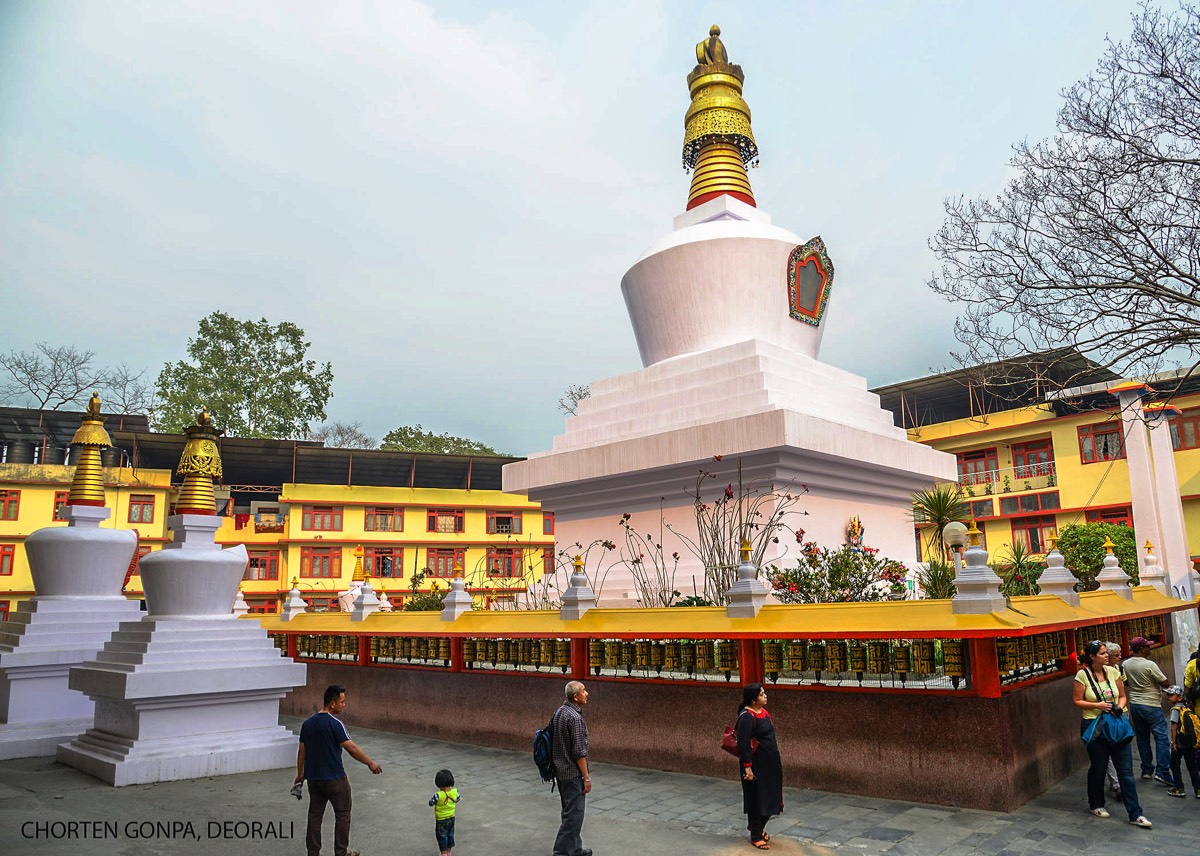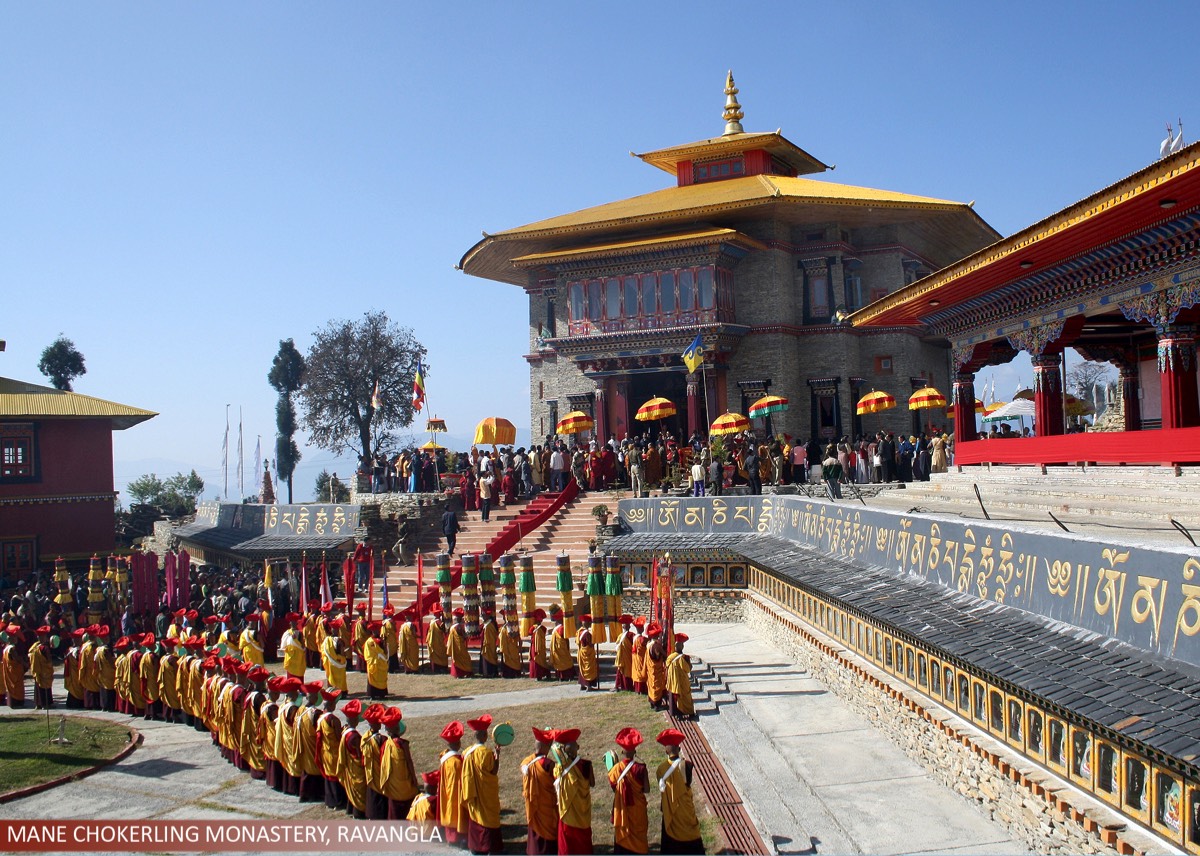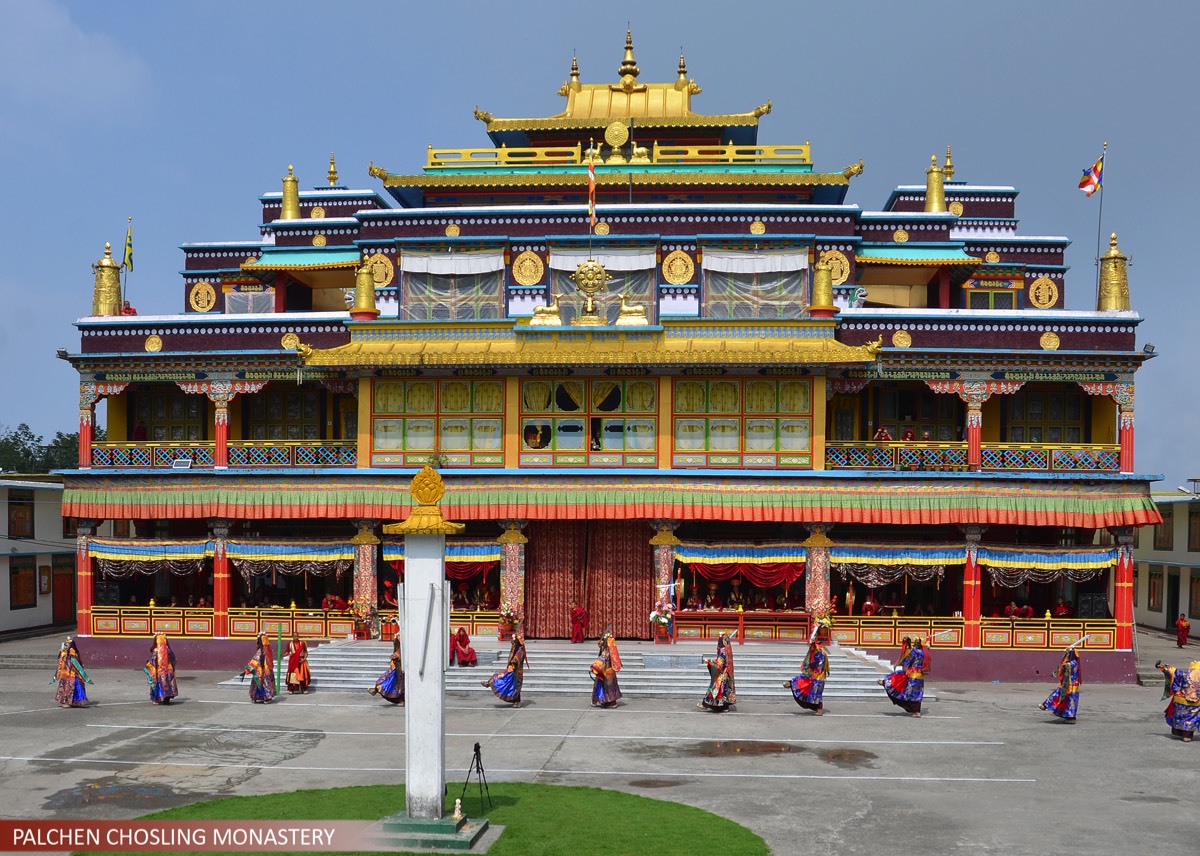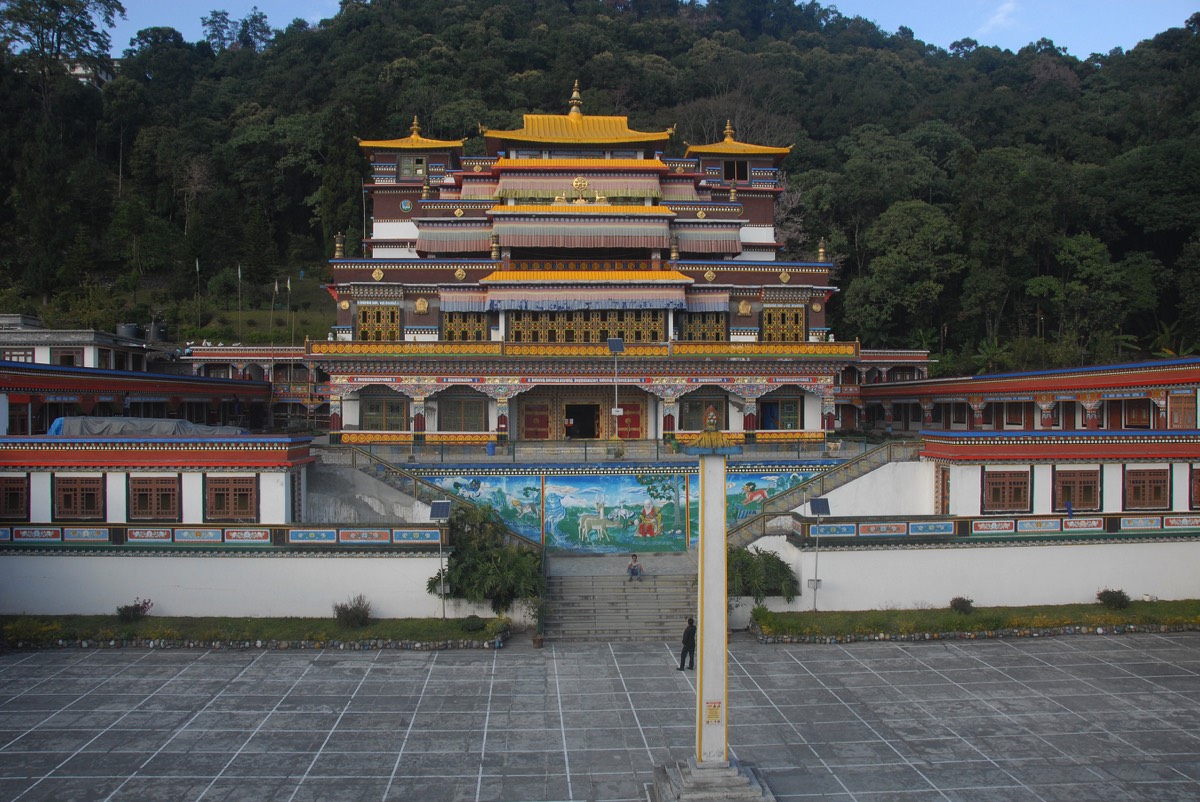TRAVEL
Surrey’s Premier Lifestyle Magazine
Five treasures of the snow
Subhasish Chakraborty’s fascination for mountains has taken him to Annapurna, the Everest Base Camp and the imposing Sheela Pass-Tawang circuit of Arunachal Pradesh in north east India, but never to the mystical Kanchenjunga, that is until now.
All Photos copyright: Department Of Tourism, Government of Sikkim
All Photos copyright: Department Of Tourism, Government of Sikkim

Kanchenjunga literally means ‘Five treasures of the snow’ and is to India’s state of Sikkim what Everest is to Nepal. Worshipped in its festivals and dances and honoured in its traditions, Kanchenjunga is considered so sacred that successful expeditions have stopped short of the summit and it remains inviolate. The Kanchenjunga range spans the borders of Nepal, Tibet and Sikkim, its ridges forming a giant ‘X’, with peaks soaring 23,000 feet and above.
I’d heard a lot about Sikkim and its mountains with Kanchenjunga as the guardian deity, the affable and easygoing hill people, the delicious Sikkimese cuisine, its predominant Buddhist culture and its world famous orchids.
In March I was invited by my New Zealand-based photographer friend Tanmoy Das to join him on his Sikkim assignment. We were guests of the Department of Tourism, Government of Sikkim. I’d always had the opinion that being a predominantly mountainous state, travelling would be an arduous and grueling affair. But preconceived ideas were swept aside once in Gangtok, Sikkim’s breathtakingly beautiful capital.
The drive from Bagdogra airport (North Bengal) to Gangtok is one of the most beautiful four hour drives to be experienced, offering spectacular views of the Sikkimese countryside nestling beside the turquoise-blue Teesta River that becomes a companion for the journey. Rhododendrons and orchids create a riot of pink, yellow and mauve colour. At Gangtok, we checked in at the Government of Sikkim-run Hotel Mount Jopuno, strategically located right in the centre of town.
The Department of Tourism wanted us to take a helicopter tour of Sikkim, covering Gangtok, Yumthang, Singtam, Geyzing, Yuksom, Dikchu and the Zemu glacier, as well as high altitude monasteries. An early dinner and early night ensued, a necessity we felt for the prospect of viewing the imposing eastern Himalayas from the air.
Fastening our seat belts next day, the Bell helicopter gradually began its ascent. The city of Gangtok with its urban landscape appeared like a million studded diamonds. As the helicopter increased altitude, the entire Himalayan panorama slowly began to reveal itself.
For Tanmoy and the rest of the crew this was the opportunity of a lifetime, shooting breathtaking vistas of the Himalayan mountain range. Feathery clouds drifted slowly along, kissing the hill tops as they went; village hamlets appeared as if some fairytale community; the white, swift flowing Teesta River meandered through the mountainous terrain like a coiled serpent and the high altitude monasteries looked more like some secluded enchanted zones of ‘Eden on Earth’. The pilot punctuated the flight with information about how high we were flying and to make use of the oxygen masks should any of us feel giddy in the rarified atmosphere.
I’d heard a lot about Sikkim and its mountains with Kanchenjunga as the guardian deity, the affable and easygoing hill people, the delicious Sikkimese cuisine, its predominant Buddhist culture and its world famous orchids.
In March I was invited by my New Zealand-based photographer friend Tanmoy Das to join him on his Sikkim assignment. We were guests of the Department of Tourism, Government of Sikkim. I’d always had the opinion that being a predominantly mountainous state, travelling would be an arduous and grueling affair. But preconceived ideas were swept aside once in Gangtok, Sikkim’s breathtakingly beautiful capital.
The drive from Bagdogra airport (North Bengal) to Gangtok is one of the most beautiful four hour drives to be experienced, offering spectacular views of the Sikkimese countryside nestling beside the turquoise-blue Teesta River that becomes a companion for the journey. Rhododendrons and orchids create a riot of pink, yellow and mauve colour. At Gangtok, we checked in at the Government of Sikkim-run Hotel Mount Jopuno, strategically located right in the centre of town.
The Department of Tourism wanted us to take a helicopter tour of Sikkim, covering Gangtok, Yumthang, Singtam, Geyzing, Yuksom, Dikchu and the Zemu glacier, as well as high altitude monasteries. An early dinner and early night ensued, a necessity we felt for the prospect of viewing the imposing eastern Himalayas from the air.
Fastening our seat belts next day, the Bell helicopter gradually began its ascent. The city of Gangtok with its urban landscape appeared like a million studded diamonds. As the helicopter increased altitude, the entire Himalayan panorama slowly began to reveal itself.
For Tanmoy and the rest of the crew this was the opportunity of a lifetime, shooting breathtaking vistas of the Himalayan mountain range. Feathery clouds drifted slowly along, kissing the hill tops as they went; village hamlets appeared as if some fairytale community; the white, swift flowing Teesta River meandered through the mountainous terrain like a coiled serpent and the high altitude monasteries looked more like some secluded enchanted zones of ‘Eden on Earth’. The pilot punctuated the flight with information about how high we were flying and to make use of the oxygen masks should any of us feel giddy in the rarified atmosphere.
LOADING
From 14,000 feet, the alpine-forested landscape of Yumthang exploded in a profusion of colour, particularly with the fiery red rhododendrons. The cascading waterfalls, particularly Lachung, appeared as if a mythical deity was pouring milk over the steep mountains. I was reminded of my grandmother’s oft-repeated bedtime story of the river Ganga pouring out of Lord Shiva’s matted hairs.
Leaving behind the majestic Yumthang, the far horizon revealed the ominous looking Kanchenjunga, snow clad and steep, precipitously steep. The imposing Kanchenjunga range stood sentinel like, guardian to India’s 22nd state. Down below, row after row of snow clad Himalayan peaks aligned. Every now and then the helicopter would come to a peak that appeared close enough to touch.
Kanchenjunga is all uneven peaks, icy curves, gushing mountain torrents and frozen fissures that create its own particular majesty and grandeur. I couldn’t help but admire the sheer ruggedness of Kanchenjunga. In my opinion the Kanchenjunga helicopter trip is on par with Everest, perhaps even a notch higher in terms of natural grandeur.
Mountain Flights, operated by Sikkim Tourism, offer a once-in-a-lifetime opportunity to those who otherwise would not be able to explore the beauty of the eastern Himalayas. Many tourists of varying age take this flight: we saw a courageous group of 65 plus. The prospect of viewing some of the tallest mountains in the world from on high is a real adrenalin rush at any age. Within an hour or so, visitors have the opportunity to get up close and personal with snow clad mountain peaks. According to one of my companions, Las Vegas native Jonathan Agnew: “I’ve heard a lot about Everest and visited Nepal once, but as luck would have it was unable to get onboard a mountain flight due to limited tickets. However, all my disappointments vanished with the 90 minute Kanchenjunga trip. I’ll definitely recommend my friends back home to embark on a Sikkim helicopter ride.”
Leaving behind the majestic Yumthang, the far horizon revealed the ominous looking Kanchenjunga, snow clad and steep, precipitously steep. The imposing Kanchenjunga range stood sentinel like, guardian to India’s 22nd state. Down below, row after row of snow clad Himalayan peaks aligned. Every now and then the helicopter would come to a peak that appeared close enough to touch.
Kanchenjunga is all uneven peaks, icy curves, gushing mountain torrents and frozen fissures that create its own particular majesty and grandeur. I couldn’t help but admire the sheer ruggedness of Kanchenjunga. In my opinion the Kanchenjunga helicopter trip is on par with Everest, perhaps even a notch higher in terms of natural grandeur.
Mountain Flights, operated by Sikkim Tourism, offer a once-in-a-lifetime opportunity to those who otherwise would not be able to explore the beauty of the eastern Himalayas. Many tourists of varying age take this flight: we saw a courageous group of 65 plus. The prospect of viewing some of the tallest mountains in the world from on high is a real adrenalin rush at any age. Within an hour or so, visitors have the opportunity to get up close and personal with snow clad mountain peaks. According to one of my companions, Las Vegas native Jonathan Agnew: “I’ve heard a lot about Everest and visited Nepal once, but as luck would have it was unable to get onboard a mountain flight due to limited tickets. However, all my disappointments vanished with the 90 minute Kanchenjunga trip. I’ll definitely recommend my friends back home to embark on a Sikkim helicopter ride.”
LOADING
Traveller’s fact file:
Getting there: The nearest airport from Gangtok is Bagdogra, 124 kilometres away in north Bengal. Scheduled flights arrive at Bagdogra from Calcutta, New Delhi and Guwahati. Major airlines such as Indian Airlines, Jet Airways, Spice Jet etc. offer regular flights to and from Bagdogra.For those who do not want to take the trouble of embarking on a road journey to Gangtok, there is the helicopter ride to Sikkim run by the Department of Tourism, Government of Sikkim, from Bagdogra to Gangtok and vice versa. Flight timings have been kept flexible so as to suit requirements of passengers arriving or departing Bagdogra and vice versa.
Hired taxis and cabs are easily available at Bagdogra airport.
Accommodation:
Gangtok is chock-a-block with hotels to suit every budget. Hotel Mayfair, Hotel Norkhil, Hotel Tashi Delek, Hotel Tibet and The Chumbi Residency are just some of its up-market hotels. All are centrally located and offer impeccable mountain hospitality. Most have a predominant Tibetan ambience. Hotel Tibet, in particular, is famed for its no-holds-barred Tibetan appeal. The in-house restaurants offer Chinese, continental and Indian cuisines, but try out the local Sikkemese delicacies prepared to perfection by the resident chef. For those interested in government run accommodation, Hotel Mount Jopuno is a great place to stay and is centrally located at P.S.Road.
Permits:
In addition to an Indian visa, foreign travellers must posses an Inner Line Permit, issued by the Indian Ministry of Home Affairs or New Sikkim House, both in Delhi. The permit is valid for 15 days. A visit to the interiors of Sikkim requires a Protected Area Permit, which may be obtained in Gangtok from the Department of Tourism.
Heli tourism has changed the way people travel to Sikkim. It has come as a boon, particularly to visitors who love the mountains but are hard pressed for time to explore either by road or trekking. The rides are competitively priced; the one hour flight to West Sikkim cost US $85, while the most popular 90 minute Kanchenjunga flight costs US $170. Sikkim Tourism also operates exclusive mountain flights to Yumthang, Gangtok as well as to Bagdogra. These are booked at the office of Sikkim Tourism.
We needed a quieter pastime after that adventure and so indulged in some ‘Dharma’, courtesy of the Sikkim monasteries.
Rumtek monastery is the seat of the Seventeenth Karmapa, while the Pemayangtse Monastery, located in West Sikkim, belongs to the Nyigma order. Tibetan Buddhism came to Sikkim in the fifteenth century and there’s a great rivalry in the Tibetan order of Buddhism between the Red Hats and the Yellow Hats. The Gelugpa sect managed to ascend Tibet while the Nyingmapa sect sought asylum in Sikkim.
The sight of red robed Lamas chanting mystical ancient mantras to the beat of drums, while butter lamps flicker before statues of the great Guru Padmasambhava has enchanted tourists from all over the world.
The Buddhist trail in Sikkim is a world apart from most people’s lives. The inherent peace and harmony of being at one with Mother Nature is tangible. At times, visitors feel really close to Godhead as the chanting of the Lamas blends harmoniously with the droning prayer wheels.
Hollywood’s brush with Tibetan Buddhism is known the world over. Superstar Richard Gere, one of the best-known faces of Tibetan Buddhism in the world, eulogised Buddhism and Tibet at the Academy Awards. Films like ‘Kundun’ and ‘Seven Years in Tibet’ also received worldwide attention.
The monasteries of Sikkim are conspicuous for their frescoes depicting Buddhist legends, and there are always the Thangka paintings made of rare silk and brocade that are very popular with both western and Indian tourists. Many monasteries have good collections of ancient Tibetan manuscripts.
No visit to Sikkim is complete without a trip to the Nathula Pass. Now open to tourists, it’s situated 14,200 feet above sea level. We were taken aback by the sight of Indian tourists posing for selfies with soldiers of the Chinese Red Army: there was an air of informality at the Nathula Pass which belies expectations. The Pass used to serve as the gateway to Tibet and was the easiest way to reach Lhasa, the capital. It used to be referred to as the ‘Silk Route’ due to the flourishing silk trade conducted from Kalimpong on the Indian side to Lhasa in Tibet. Now open to tourists five days a week, it is a real ‘must see’.
Our penultimate day was spent in Khangchendzonga National Park and with the tribal communities of neighbouring areas in west Sikkim. In this part of the world, The Mountain Institute (TMI) has played a significant role in protecting rare alpine forests and meadows. According to the Institute’s spokesperson, there are more than 400 orchid species, 144 mammals, 300 species of bird life and a mind boggling 400 plus butterfly species in the area.
We were amazed to see how well The Mountain Institute involved local communities in promoting concepts such as community eco-tourism, site maintenance and conservation education. From training tour guides to developing market strategies for promoting eco-tourism, the Institute has played a vital role in uplifting the local Himalayan economy around the Khangchendzonga National Park.
We rounded off the trip with a fabulous get together dinner at the in-house restaurant – ‘Yatung’ – of the up-market Chumbi Residency hotel, renowned for its thematically designed ambience evoking the nostalgia of the watering holes along the historical Silk Route to Tibet.
Local fare at Yatung is in a class of its own. Visitors should try the locally brewed ‘Chang’ which is prepared by fermenting millet. This signature brew is served in a light wooden tumbler and believed to have no hangover syndrome. Check that claim for yourself on any trip to Indian Shangri-La!
We needed a quieter pastime after that adventure and so indulged in some ‘Dharma’, courtesy of the Sikkim monasteries.
Rumtek monastery is the seat of the Seventeenth Karmapa, while the Pemayangtse Monastery, located in West Sikkim, belongs to the Nyigma order. Tibetan Buddhism came to Sikkim in the fifteenth century and there’s a great rivalry in the Tibetan order of Buddhism between the Red Hats and the Yellow Hats. The Gelugpa sect managed to ascend Tibet while the Nyingmapa sect sought asylum in Sikkim.
The sight of red robed Lamas chanting mystical ancient mantras to the beat of drums, while butter lamps flicker before statues of the great Guru Padmasambhava has enchanted tourists from all over the world.
The Buddhist trail in Sikkim is a world apart from most people’s lives. The inherent peace and harmony of being at one with Mother Nature is tangible. At times, visitors feel really close to Godhead as the chanting of the Lamas blends harmoniously with the droning prayer wheels.
Hollywood’s brush with Tibetan Buddhism is known the world over. Superstar Richard Gere, one of the best-known faces of Tibetan Buddhism in the world, eulogised Buddhism and Tibet at the Academy Awards. Films like ‘Kundun’ and ‘Seven Years in Tibet’ also received worldwide attention.
The monasteries of Sikkim are conspicuous for their frescoes depicting Buddhist legends, and there are always the Thangka paintings made of rare silk and brocade that are very popular with both western and Indian tourists. Many monasteries have good collections of ancient Tibetan manuscripts.
No visit to Sikkim is complete without a trip to the Nathula Pass. Now open to tourists, it’s situated 14,200 feet above sea level. We were taken aback by the sight of Indian tourists posing for selfies with soldiers of the Chinese Red Army: there was an air of informality at the Nathula Pass which belies expectations. The Pass used to serve as the gateway to Tibet and was the easiest way to reach Lhasa, the capital. It used to be referred to as the ‘Silk Route’ due to the flourishing silk trade conducted from Kalimpong on the Indian side to Lhasa in Tibet. Now open to tourists five days a week, it is a real ‘must see’.
Our penultimate day was spent in Khangchendzonga National Park and with the tribal communities of neighbouring areas in west Sikkim. In this part of the world, The Mountain Institute (TMI) has played a significant role in protecting rare alpine forests and meadows. According to the Institute’s spokesperson, there are more than 400 orchid species, 144 mammals, 300 species of bird life and a mind boggling 400 plus butterfly species in the area.
We were amazed to see how well The Mountain Institute involved local communities in promoting concepts such as community eco-tourism, site maintenance and conservation education. From training tour guides to developing market strategies for promoting eco-tourism, the Institute has played a vital role in uplifting the local Himalayan economy around the Khangchendzonga National Park.
We rounded off the trip with a fabulous get together dinner at the in-house restaurant – ‘Yatung’ – of the up-market Chumbi Residency hotel, renowned for its thematically designed ambience evoking the nostalgia of the watering holes along the historical Silk Route to Tibet.
Local fare at Yatung is in a class of its own. Visitors should try the locally brewed ‘Chang’ which is prepared by fermenting millet. This signature brew is served in a light wooden tumbler and believed to have no hangover syndrome. Check that claim for yourself on any trip to Indian Shangri-La!
essence info
Sikkim Tourist Information Centre, M.G. Marg, Gangtok, Sikkim, India.Telephone: 01483 520500
Websites: www.sikkimtourism.gov.in
The drive from Bagdogra airport (North Bengal) to Gangtok is one of the most beautiful four hour drives to be experienced, offering spectacular views of the Sikkimese countryside nestling beside the turquoise-blue Teesta River that becomes a companion for the journey.

